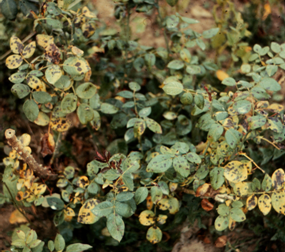
What is black spot?
Black spot is a common and potentially serious leaf disease affecting many types of roses. Black spot is found wherever roses are grown.
What does black spot look like?
Black spot lesions (i.e., infected areas) are roughly circular and may be up to ½ inch in diameter. Lesions often have feathery margins and are dark brown to black in color. Black spot initially appears during periods of wet weather, particularly when rose leaves are first emerging. The disease starts on lower leaves but will spread to the entire plant. Severe black spot leads to yellowing of leaves and defoliation. Black spot can also develop on one-year old canes, leading to raised, purplish-red blotches that blacken and blister.
Where does black spot come from?
Black spot is caused by the fungus Diplocarpon rosae, which survives in rose leaf litter and in infected rose canes. Spores of the fungus are easily spread to emerging leaves by wind or splashing rain.
How do I save a rose with black spot?
If your rose has little or no defoliation, and the weather is dry, then no treatments are necessary. If your rose has a history of severe black spot, and the weather for the growing season is predicted to be wet, consider applying preventative fungicide treatments. Fungicides containing chlorothalonil, copper sulfate, and myclobutanil can be highly effective in controlling black spot. Neem oil is another organic product (in addition to copper sulfate) that has been shown to provide some black spot control. Treat every seven to 14 days from bud break until wet weather subsides. DO NOT use the same active ingredient for all treatments. Instead, alternate the use of at least two active ingredients (particularly if you decide to use myclobutanil) to help minimize problems with fungicide-resistant strains of the black spot pathogen. Be sure to read and follow all label instructions of the fungicide(s) that you select to ensure that you use the fungicide(s) in the safest and most effective manner possible.
How do I prevent problems with black spot in the future?
Select rose varieties that are hardy in your area and that have a high level of black spot resistance. The hybrid shrub rose Rosa ‘Meipotal’ (Carefree Delight®), rugosa rose varieties such as ‘Blanc Double De Coubert’ and ‘Fru Dagmar Hastrup’, climbing roses such as Rosa × Kordesii ‘William Baffin’ and Rosa × Kordesii ‘Henry Kelsey’, and roses in the Knockout® series all have excellent resistance to black spot. Plant roses in a high light environment, and space shrubs far apart. This will promote good airflow and quick drying of foliage. Promptly remove diseased leaf litter. Prune diseased branches six to eight inches below any obvious infections. Prune only in dry weather. Disinfest pruning tools between cuts by treating them for at least 30 seconds with 70% alcohol (preferable for metal tools) or a 10% bleach solution. Rubbing alcohol and spray disinfectants often contain at approximately 70% alcohol. If you use bleach, be sure to thoroughly rinse tools and oil them after pruning to prevent rusting. Water roses at the base using a soaker or drip hose to minimize wetting of leaves and reduce movement of spores of the black spot pathogen. DO NOT overhead water (e.g., with a sprinkler).
Authors: Adrian Crabb* and Brian Hudelson, UW-Madison Plant Pathology
Last Revised: 02/28/2024
D-number: D0020
*Completed as partial fulfillment of the requirements for Plant Pathology 300 – Introduction to Plant Pathology at the University of Wisconsin Madison.
Thanks to Mike Maddox, Judy Reith-Rozelle and Ann Wied for reviewing this document.
A complete inventory of UW Plant Disease Facts is available at the University of Wisconsin-Madison Plant Disease Diagnostics Clinic website: https://pddc.wisc.edu.
Send a Plant Sample for Analysis
Be cautious when self-diagnosing plant health issues. Very few diseases can accurately be diagnosed by eye.
Contact the UW Plant Disease Diagnostics Clinic (PDDC), and for a small fee, clinic staff can examine a plant, determine the cause of the disease/disorder, and provide advice on how to control or prevent the issue.
Download Article





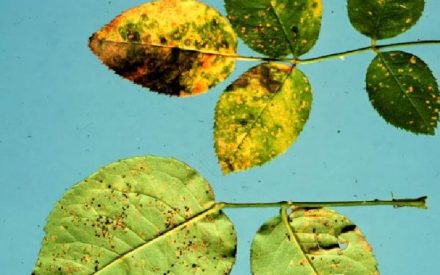 Rose Rust
Rose Rust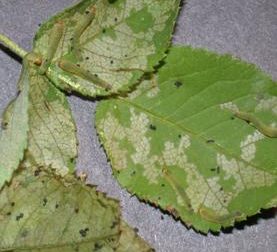 Roseslug Sawfly
Roseslug Sawfly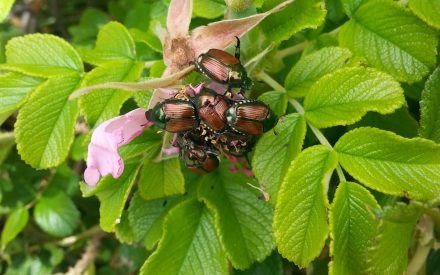 Japanese Beetle
Japanese Beetle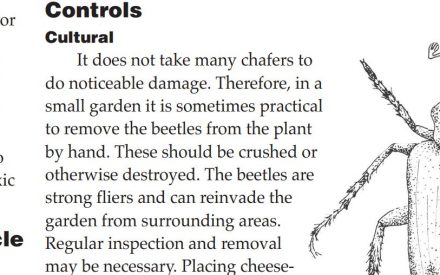 Deciduous Tree and Shrub Disorder: Skeletonizing by Rose Chafer
Deciduous Tree and Shrub Disorder: Skeletonizing by Rose Chafer


